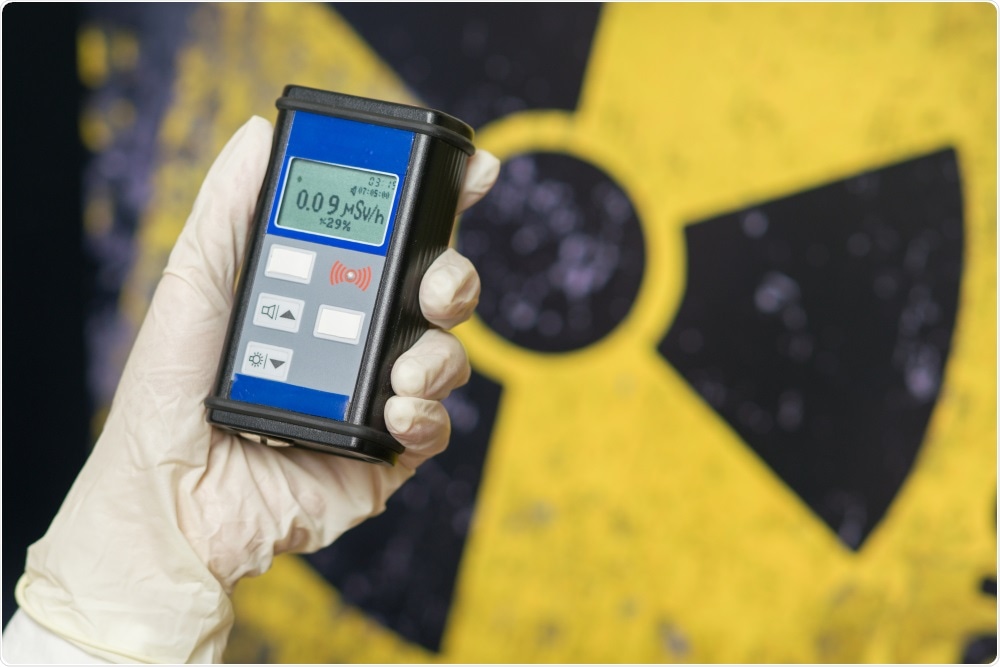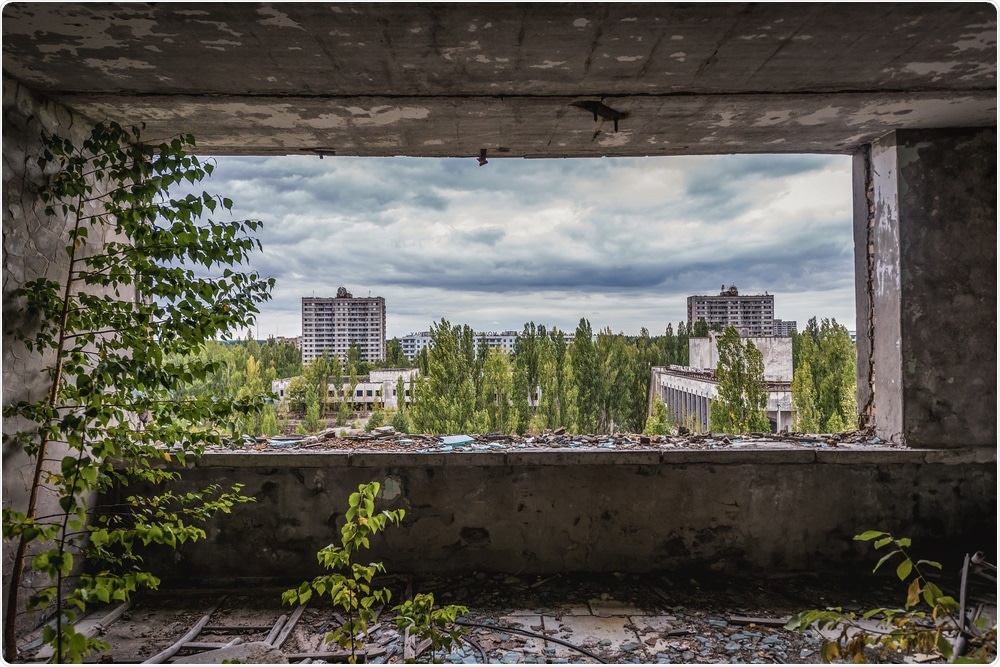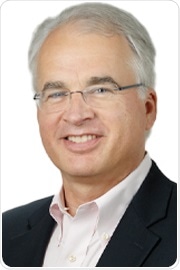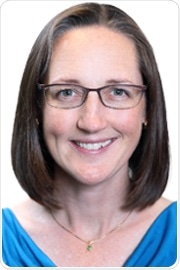In this interview, AZoLifeSciences speaks to researchers from the National Cancer Institute (NCI) about their latest research that investigated the genetic effects of Chernobyl radiation.
What provoked your research into the possible genetic effects of radiation?
Dr. Chanock: Scientific questions about the effects of radiation on human health have been investigated since the atomic blasts over Hiroshima and Nagasaki and have been highlighted again by Chernobyl and by the nuclear accident that followed the tsunami in Fukushima, Japan.
In recent years, advances in DNA sequencing technology have enabled us to begin to address important questions about the effect of these events on the genomic features of radiation-induced cancers and perhaps the effects on survivors of the events. The foresight of investigators several decades ago has enabled us to conduct these analyses in well-designed epidemiological studies.

Radiation. Image Credit: Egoreichenkov Evgenii/Shutterstock.com
How do nuclear accidents such as the atomic blast over Hiroshima and Nagasaki, as well as Chernobyl, release radiation?
Dr. Chanock: The release of radioactive substances into the environment, such as what occurred following the accident in Chernobyl, have resulted in contamination of the ecosystem and water table, thus contaminating crops and cattle.
There is particular concern about radioactive iodine (I-131), which is known to be associated with an increased risk of thyroid cancer based on multiple studies following these events. The primary way individuals may be exposed to I-131 after nuclear events is through drinking milk from cows that grazed in contaminated fields.
Can you describe how you carried out your two studies into the genetic effects of Chernobyl radiation? What did you discover?
Dr. Chanock: Our studies were conducted on biospecimens carefully collected from well-designed studies of both survivors of the Chernobyl accident and liquidators, namely the clean-up workers who were brought in to remove the radioactive debris.
One study addressed a long-standing question as to whether exposure of ionizing radiation to parents could lead to passing on more mutations in their children. To determine whether radiation exposure results in genetic changes that can be passed from parent to offspring, we used next-generation DNA sequencing and other genomic characterization tools to analyze the complete genomes of 130 people born between 1987 and 2002 together with their 105 mother-father pairs.
We analyzed the genomes of adult children for an increase in a particular type of inherited genetic change known as de novo mutations. De novo mutations are genetic changes that arise randomly in a person’s gametes (sperm and eggs) and can be transmitted to their offspring but are not observed in the parents.
For the range of radiation exposures experienced by the parents in the study, there was no evidence from the whole-genome sequencing data of an increase in the number or types of de novo mutations in their children born between 46 weeks and 15 years after the accident. The number of de novo mutations observed in these children were highly similar to those of the general population with comparable characteristics.
Dr. Morton: In the second study, we used next-generation sequencing to profile the genetic changes in thyroid cancers that developed in 359 people exposed as children or in utero to ionizing radiation from radioactive iodine (I-131) released by the Chernobyl nuclear accident and in 81 unexposed individuals born more than nine months after the accident.
The energy from ionizing radiation breaks the chemical bonds in DNA, resulting in a number of different types of damage. The new study highlights the importance of a particular kind of DNA damage that involves breaks in both DNA strands in the thyroid tumors. The association between DNA double-strand breaks and radiation exposure was stronger for children exposed at younger ages.
We also identified the candidate “drivers” of cancer in each tumor — the key genes in which alterations enabled the cancers to grow and survive. Nearly all the alterations involved genes in the same signaling pathway, called the mitogen-activated protein kinase (MAPK) pathway, including the genes BRAF, RAS, and RET.
The set of affected genes is similar to what has been reported in previous studies of thyroid cancer. However, we observed a shift in the distribution of the types of mutations in the genes. Specifically, in the Chernobyl study, thyroid cancers that occurred in people exposed to higher radiation doses as children were more likely to result from gene fusions (when both strands of DNA are broken and then the wrong pieces are joined back together), whereas those in unexposed people or those exposed to low levels of radiation were more likely to result from point mutations (single base-pair changes in a key part of a gene).
The results suggest that DNA double-strand breaks may be an early genetic change following exposure to radiation in the environment that subsequently enables the growth of thyroid cancers.
Dr. Chanock: The results of these papers have important implications for public health in several ways. The first paper provides some reassurance to victims of other nuclear disasters, who were exposed to radiation at similar or lower doses than those we studied following the Chernobyl accident, such as inhabitants of the Fukushima region in Japan.
We do not see that the effects of ionizing radiation will be transmitted across generations, at least through DNA.
Dr. Morton: Regarding the second paper, since other mutagens can cause DNA double-strand breaks, our findings suggest that a reliable biomarker to distinguish tumors induced by radiation versus other causes has yet to be established.
Additionally, our results are consistent with a linear relationship between radiation dose and DNA double-strand breaks in the dose range examined in our analysis (≤1 Gy). These findings align with the extensive scientific evidence regarding DNA damage and cancer risk following ionizing radiation exposure.

Chernobyl. Image Credit: Fotokon/Shutterstock.com
How was the Chernobyl Tissue Bank instrumental to your research?
Dr. Morton: We are fortunate that visionary scientists recognized in the 1990s that collection of thyroid tumor tissue would likely provide unique insights into cancer risk following the accident – even though many of the technologies that we used for our study had not yet been invented.
Thanks to their foresight, we have been able to shed new light on the biological mechanisms by which ionizing radiation caused the increase in thyroid cancer in individuals living in areas surrounding the Chernobyl nuclear power plant.
Do you believe that with continued research, radiation-induced cancers will be better understood? What are the next steps in your research?
Dr. Chanock: For future directions for research on the question of possible transgenerational effects of radiation exposure, studies of higher acute (single burst) dose exposure might be informative, particularly if the exposure was close to conception.
Additionally, the findings of our study should stimulate studies of the balance between the frequency of radiation-induced mutations and the mechanics of accurate DNA repair to counterbalance the new (de novo) mutations.
Dr. Morton: Our work provides a foundation for further investigation of radiation-induced cancer, particularly with respect to differences in risk as a function of both dose and age. Further studies are needed to consider how the radiation dose-associated characteristics we identified could be incorporated into estimates of the probability that a specific papillary thyroid tumor was caused by I-131 exposure, which is currently based on prior epidemiologic studies.
The limited number of driver mutations, all in the MAPK pathway, offers an opportunity for researchers to carefully investigate how and why thyroid cancer arises and why so few events are required to initiate thyroid cancer development, such as ionizing radiation.
Additionally, our results necessitate further research to establish the causal role of radiation-related DNA double-strand breaks predominantly repaired by non-homologous end joining in human carcinogenesis.
Where can readers find more information?
Press Release: https://dceg.cancer.gov/news-events/news/2021/genetic-effects-chernobyl
DCEG Research on Chernobyl: https://dceg.cancer.gov/research/what-we-study/chernobyl-research
About Dr. Stephen J. Chanock
Dr. Stephen J. Chanock is the Director of the Division of Cancer Epidemiology and Genetics at the National Cancer Institute (NCI), part of the National Institutes of Health.

He is a leading expert in the discovery and characterization of cancer susceptibility regions in the human genome and has made landmark contributions to our understanding of common inherited genetic variants associated with cancer risk and outcomes.
He was recently awarded the AACR-ACS Award in Cancer Epidemiology and Prevention and he is an elected member of the American Epidemiological Society, The American Association of Physicians, and the Society of Pediatric Research.
About Dr. Lindsay Morton
Dr. Lindsay Morton is the Deputy Chief of the Radiation Epidemiology Branch in the Division of Cancer Epidemiology and Genetics at NCI.
The focus of her research is to quantify the risk and elucidate the causes of second cancers in different groups of cancer survivors, and to improve understanding of radiation carcinogenesis.
She was awarded scientific tenure by the NIH in 2015 and is an elected member of the American Epidemiological Society.